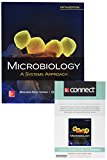
Introduction:
Allergies are the conditions caused by hypersensitivity of the immune system to substances that are typically harmless in the environment. Common allergens include pollen, certain type of foods, metals and other substances such as insect stings, and medications.
Answer to Problem 1MCQ
Correct answer:
Pollen is an inhalant type of allergen. Hence, option (d) is correct.
Option (d) is given as “Inhalant”.
Explanation of Solution
Justify reason for the correct statement:
The pollen is light and is produced by plants for the purpose of reproduction. These pollens are light and travel through air and get inhaled during breathing. It causes irritation in the respiratory tract.
Hence, option (d) is correct.
Justify reasons for the incorrect statements:
Option (a) is given as “contactant”.
Contact allergens enter the body through the skin and these allergens generally cause skin rashes or itching but pollen causes irritation in the respiratory tract. Hence, it is a wrong answer.
Option (b) is given as “ingestant”.
Ingestants are the food-based allergens and enter the body through food consumption. It basically consists of milk, peanuts, wheat nuts and many more. But pollen is not a consumable item. Hence, it is a wrong answer.
Option (c) is given as “Injectants”
Injectants enter the body through insect bite, drugs or serum. Hence, it is a wrong answer.
Hence, options (a), (b), and (c) are incorrect.
The pollen is a type of inhalant allergen. They enter the body while breathing and cause irritation in the respiratory tract.
Want to see more full solutions like this?
Chapter 16 Solutions
GEN COMBO LOOSELEAF MICROBIOLOGY:A SYSTEMS APPROACH; CONNECT ACCESS CARD
- What is the structure and function of Eukaryotic cells, including their organelles? How are Eukaryotic cells different than Prokaryotic cells, in terms of evolution which form of the cell might have came first? How do Eukaryotic cells become malignant (cancerous)?arrow_forwardWhat are the roles of DNA and proteins inside of the cell? What are the building blocks or molecular components of the DNA and proteins? How are proteins produced within the cell? What connection is there between DNA, proteins, and the cell cycle? What is the relationship between DNA, proteins, and Cancer?arrow_forwardWhy cells go through various types of cell division and how eukaryotic cells control cell growth through the cell cycle control system?arrow_forward
- In one paragraph show how atoms and they're structure are related to the structure of dna and proteins. Talk about what atoms are. what they're made of, why chemical bonding is important to DNA?arrow_forwardWhat are the structure and properties of atoms and chemical bonds (especially how they relate to DNA and proteins).arrow_forwardThe Sentinel Cell: Nature’s Answer to Cancer?arrow_forward
- Molecular Biology Question You are working to characterize a novel protein in mice. Analysis shows that high levels of the primary transcript that codes for this protein are found in tissue from the brain, muscle, liver, and pancreas. However, an antibody that recognizes the C-terminal portion of the protein indicates that the protein is present in brain, muscle, and liver, but not in the pancreas. What is the most likely explanation for this result?arrow_forwardMolecular Biology Explain/discuss how “slow stop” and “quick/fast stop” mutants wereused to identify different protein involved in DNA replication in E. coli.arrow_forwardMolecular Biology Question A gene that codes for a protein was removed from a eukaryotic cell and inserted into a prokaryotic cell. Although the gene was successfully transcribed and translated, it produced a different protein than it produced in the eukaryotic cell. What is the most likely explanation?arrow_forward
 Comprehensive Medical Assisting: Administrative a...NursingISBN:9781305964792Author:Wilburta Q. Lindh, Carol D. Tamparo, Barbara M. Dahl, Julie Morris, Cindy CorreaPublisher:Cengage LearningEssentials of Pharmacology for Health ProfessionsNursingISBN:9781305441620Author:WOODROWPublisher:Cengage
Comprehensive Medical Assisting: Administrative a...NursingISBN:9781305964792Author:Wilburta Q. Lindh, Carol D. Tamparo, Barbara M. Dahl, Julie Morris, Cindy CorreaPublisher:Cengage LearningEssentials of Pharmacology for Health ProfessionsNursingISBN:9781305441620Author:WOODROWPublisher:Cengage Medical Terminology for Health Professions, Spira...Health & NutritionISBN:9781305634350Author:Ann Ehrlich, Carol L. Schroeder, Laura Ehrlich, Katrina A. SchroederPublisher:Cengage Learning
Medical Terminology for Health Professions, Spira...Health & NutritionISBN:9781305634350Author:Ann Ehrlich, Carol L. Schroeder, Laura Ehrlich, Katrina A. SchroederPublisher:Cengage Learning





